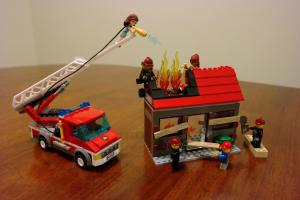Us Versus Them

I was reading the backlog of the Fedora development mailing list and came across a post in which Richard Hughes made a very interesting comment:
I know lots of Red Hat developers worn down by the low-level harassment on this mailing list, so much so, that they just stop pushing the boundaries and go work on something else cool, e.g. ChromeOS.
I’ve been following this particular mailing list for many years, and the sad thing is, I think he’s right. There’s this underlying current of “us versus them” that can pop up, especially in longer-running threads, and “them” is someone with a @redhat.com email address.
On some levels this makes sense. Red Hat is the single largest entity in Fedora and many (if not most) of the movers and shakers in Fedora are Red Hat employees. A quick glance at the Fedora 21 System Wide Changes shows many more Red Hat employees than not. Is it any wonder that individual contributors can feel a bit like a sailboat in the way of an aircraft carrier?
So, is this some conspiracy to keep Fedora under Red Hat control? Is it something we should fight against? Or is there a reasonable explanation for Red Hat’s influence?
First off, there’s the question of whether people are hired at Red Hat to work on Fedora or whether they’re hired because of their work on Fedora. I had the opportunity at Devconf earlier this year to sit down with Patrick Uiterwijk, who did most of the work on Fedora’s OpenID provider, and was then hired by Red Hat because of that work. Patrick’s is not the only story like that. While not all competent Fedora contributors are Red Hat employees, Red Hat employees who contribute to Fedora are generally pretty darn competent, and competency in Fedora is rewarded with influence.
There’s also the fact that Red Hat pays people to work on Fedora. Many individual contributors are working on Fedora in their spare time. While this doesn’t necessarily affect the quality of their work, it does tend to affect the quantity. To give an example, at DevConf, I also talked with Stephen Gallagher about joining the Fedora Server working group. After DevConf, I signed up for the mailing list and then did… nothing. I’m the sysadmin and a teacher at my school, and at home I’m a husband and father of four children under six. While I have great intentions of helping out with the Server working group, it’s just not high enough on my list of priorities for me to have the time… and I suspect I’m not the only individual contributor in that boat.
Finally, there’s the fact that Red Hat’s employees actually get to know each other, at least to some extent. One of the big things I’ve learned in my years working here in Lebanon is the importance of relationship. It’s a lot easier to work with someone after you’ve sat down with them, had a coffee (or, in my case, a Coke) and chatted. This was the main reason I enjoyed DevConf and one reason I really wish I could make one of the Flock conferences.
So where does this leave us? Red Hat does have a large influence on Fedora. It’s not a conspiracy, it’s life, and attacking Red Hat employees because of its influence is counterproductive.
So, going back to Richard’s original message, we need to stop tearing each other down. When people speak, let’s assume good faith, and not assume that any ideas we disagree with will spell the end of Fedora, Linux or the world as we know it. Most of all, we need to make a conscious choice to value each other, even when we disagree.
Have a great 2015!

